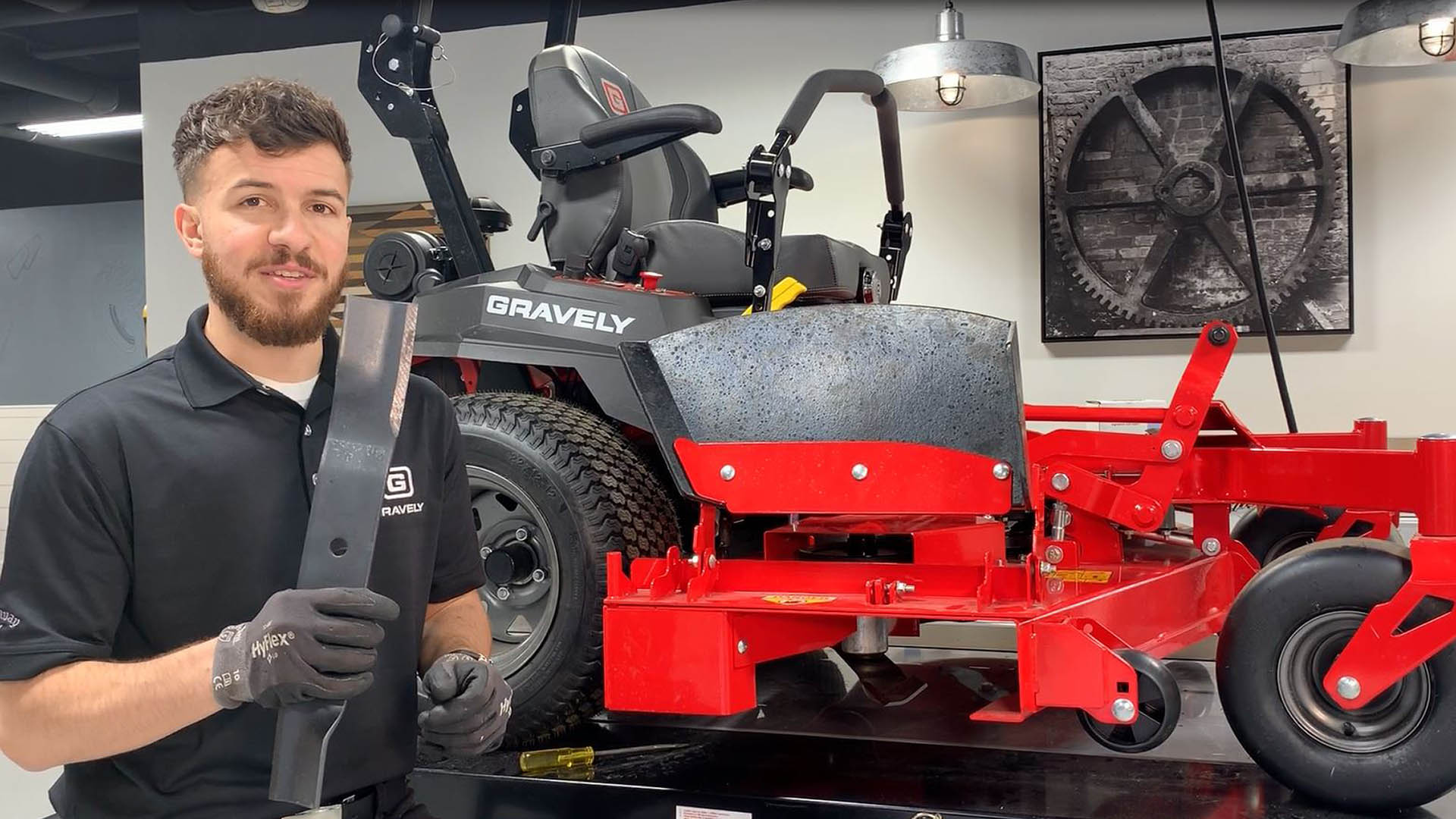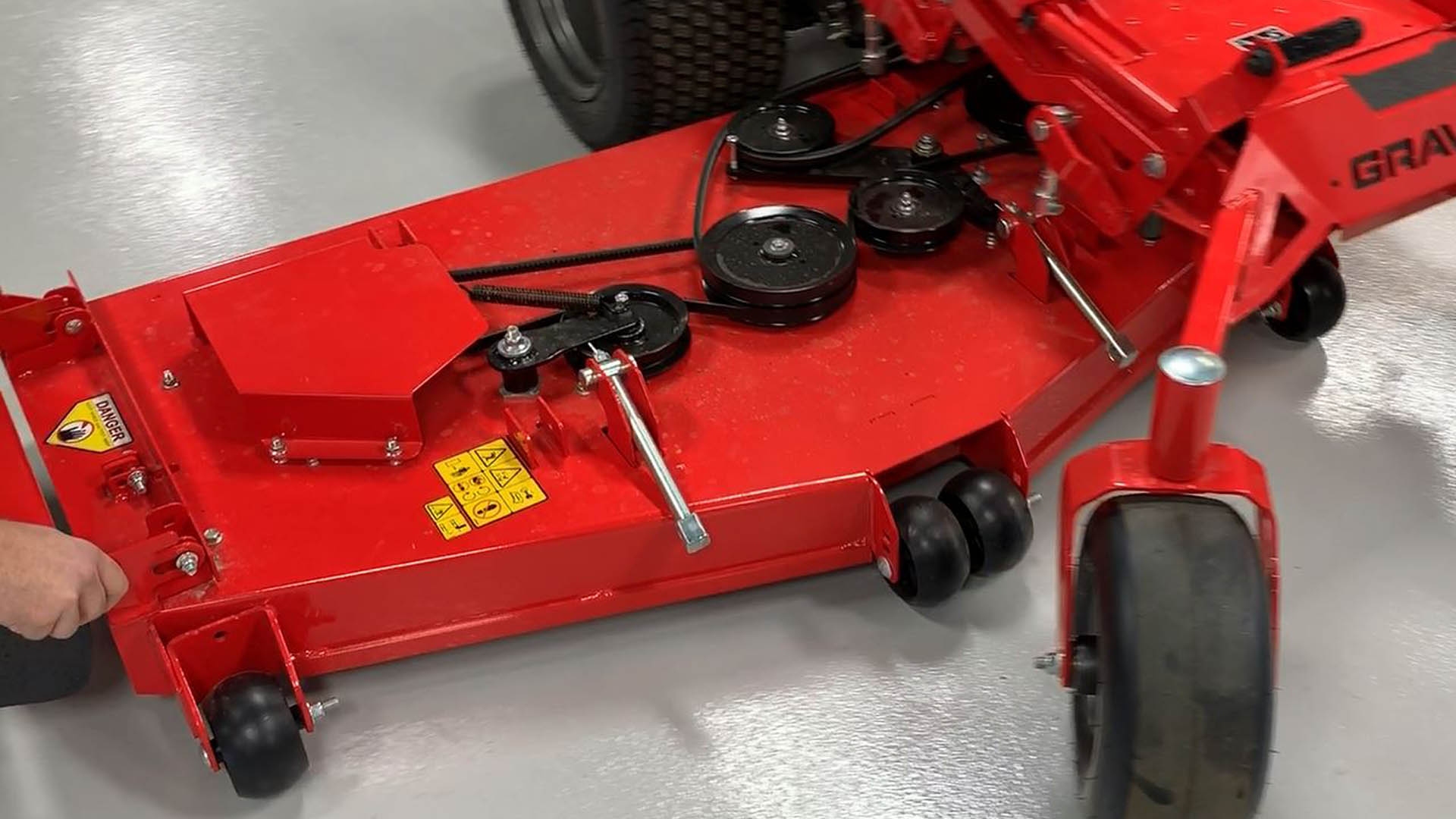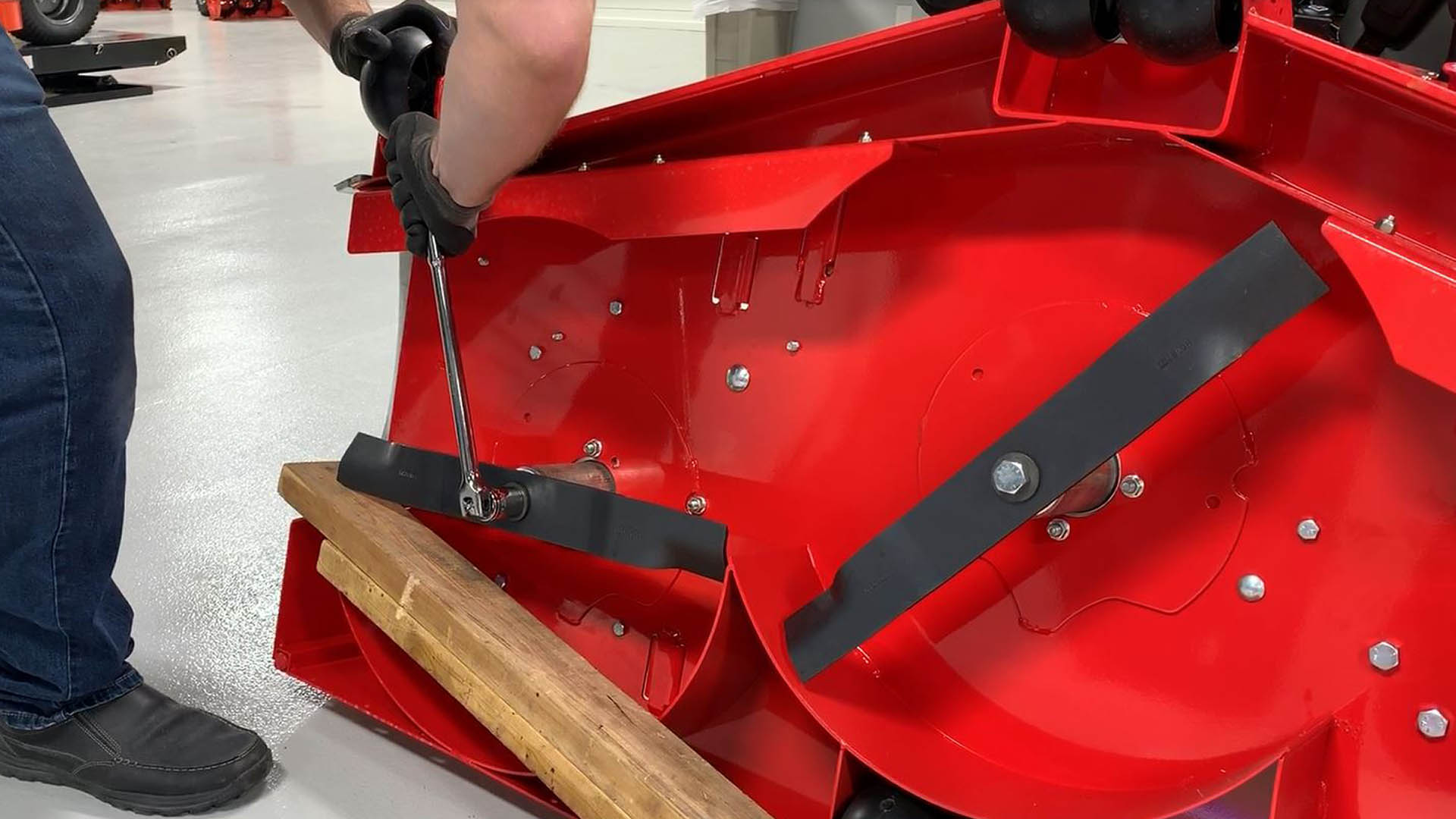Gravely Parts Sale! 10% off all online orders + free shipping on orders over $40. SHOP NOW
Preparing a Commercial Lawn Mower for Spring
The professional lawn mower maintenance schedule
Warm weather is coming, have you done your lawn mower spring maintenance? If you want your mower to perform reliably and last for years, we recommend you follow these guidelines before you start cutting.
Maintaining a lawn mower engine
Lawn mower engine oil changes
The obvious point here is to complete an oil change at the intervals recommended in your engine manual. If you can't remember the hour reading at your mower's last oil change, stay on the safe side and change it, along with the oil filter.
How to change lawn mower engine oil
Easy-to-read and understandable engine oil change details are outlined in the engine manual for your unit.
- Stop the unit, wait for hot parts to cool and remove the engine key.
- Position a drain pan under the oil drain hose.
- Remove the drain plug and allow all oil to drain.
- Remove and discard oil filter and install a new filter. When installing a new filter, apply a thin layer of oil onto the oil filter gasket.
- Reinstall drain plug and tighten to specification.
- Remove cap / dipstick from engine oil fill port.
- Fill engine with oil of correct weight / viscosity rating and quantity.
- Reinstall cap / dipstick, wait a few seconds and remove. Check the oil quantity and make sure it's within the markings on the dipstick. Ensure cap is secure before attempting to start the engine.
How to change lawn mower air filter
Details are listed in the lawn mower engine manual, but it's as simple as removing the air filter cover from the engine and remove the air filter. If the engine air filter is soiled or damaged, dispose filter and install a new air filter; if air filter appears clean and in good condition, reinstall the filter. After filter is installed, reinstall air filter cover.
Hydro Gear transaxle maintenance
If you don't remember when the transaxle oil was changed, err on the side of caution. Transaxle oil is a heat transfer, and once it breaks down, it's no longer an effective lubricant for critical mechanical components in a transaxle. A new Gravely zero turn lawn mower will need the transaxle oil changed after the first 75 hours of operation, but then only every 400 hours after that.
Change Hydro Gear transaxle oil
Changing transaxle oil is just as easy as changing engine oil:
- Park the unit on a flat, level surface, wait for hot parts to cool and remove the ignition key.
- Place a drain pan under the transaxle being serviced.
- Remove the filter guard and filter from the transaxle. Dispose the filter; retain the guard.
- Remove the transaxle vent port plug and allow oil to drain.
- Wipe filter mounting surface clean and lubricate gasket on filter with clean hydraulic oil.
- Reinstall filter and filter guard.
- Add manufacturer's recommended oil type and volume to the transaxle oil expansion tank until oil reaches top of vent port.
- Reinstall hydraulic oil vent port plug.
- Add oil to transaxle oil expansion tanks until fluid level reaches cold fill mark.
- Purge hydraulic oil system.
Purging Hydro Gear transaxles
When transaxle oil is changed, air pockets can get caught in the transaxles, requiring the need to purge air from the transaxles immediately after completing service. When purging is complete, recheck the transaxle oil expansion tanks and add oil so it reaches the cold fill line in each tank, if necessary.
The transaxle purge procedure is somewhat involved, so please refer to the operator's manual for your unit for detailed illustrations and instructions. If the process seems too complex, please leverage the skill and experience of an authorized Gravely dealer.
Sharpening professional lawn mower blades
Sharp and balanced blades have a better cut quality and they reduce the need to mow the same area twice and waste time.

If there's no access to a lift, blades can be accessed and removed easily after removing the mower deck. Gravely designed the process so one person can do it without special tools, but again, handling mower blades is a delicate process, so please turn to a Gravely dealer for service help.
Remove lawn mower deck
The steps below are an abbreviation of the procedure's detailed instructions in the operator's manual. As always, follow the safety instructions in the manual while completing service.

- Park the unit on a flat, level surface and remove the ignition key.
- Remove the left belt cover.
- Remove the spring from the anchor bolt to release PTO belt tension.
- Remove the PTO belt from the engine clutch.
- Raise deck to highest position.
- Loosen front jam nut on eye bolts to reduce deck lift assist spring tension.
- Remove lift assist springs.
- Place wood blocks under each side of deck.
- Lower deck to lowest position so deck rests on blocks.
- Remove hardware retaining deck lift links to deck lift brackets.
- Move deck lift links away from deck lift brackets.
- Slide deck out from under unit.
Removing lawn mower blades
Follow the safety instructions in the manual before starting a service procedure because the blades are sharp and can cut if not handled carefully.

- Rotate the deck so its underside is exposed.
- Position a wood block between baffle and blade to prevent blade from rotating.
- With either a breaker bar or an impact gun, remove hardware retaining the blades.
Inspect the blades for wear, cracks and damage. If the blade is worn too far, is cracked or damaged, dispose it. Blades that are dull but in good shape otherwise can be sharpened according to the manual's instructions. Remember, the maximum amount of material that can be removed from a lawn mower blade over the life of that blade is one-half inch.
Checking lawn mower blade balance
Whether the blades have just been sharpened or not, they should be checked for balance before each season. To check blade balance, slide the blade onto a screwdriver, shoulder bolt or pin and position it horizontally. If the blade moves, it will need more material removed from the heavy end of the blade. After the blades pass the balance test, they can be reinstalled.
Remember to double-check the orientation of the blade when reinstalling. Blades must be installed with the cutting edge facing away from the top of the mower deck.
Clean mower deck
Mower decks packed with grass clippings, dirt and debris can damage your mower, affect cut quality and hurt lawns. Grass, dirt and debris holds moisture that corrodes bare metal on the spindles and mower blades. Additionally, grass-packed cutting decks can harbor fungi and bacteria that can spread to other lawns and damage them.

Grass buildup around the discharge area can prevent clippings from discharging evenly and could lead to clumping. Grass buildup under the deck can also affect the aerodynamics of the cutting chamber, disrupt the air lift under the deck and diminish the cut quality.
Check mower belts
While the deck is removed, inspect the mower belts for cracks, signs of wear or damage. If belts (PTO belt, mower drive belt, transaxle drive belt) appear unacceptable after a visual inspection, replace them according to the procedure in the operator's manual. Don't leave these to chance, because a busted belt on the jobsite will cost a lot more time than it will today.
Greasing a lawn mower
Lack of lubrication can wear critical components like bearings. Aside from applying a thin layer of oil to all pivot points and pin connections on the mower, there are typically only two or three lubrication points on a Gravely mower.
- Caster fork bearings
- Caster wheel hubs
Locate the grease fittings on the caster fork hubs and the caster wheel hubs. Pump grease into each fitting until grease squeezes past the bearing seals at the top of the caster fork hubs and on the sides of the caster wheel hubs. Wipe away the excess grease.
If seat adjustment slots are visible on the bottom of the seat, apply a small amount of grease to the seat adjustment tracks and move the seat back and forth to spread grease along the tracks. All lubrication points for your mower can be found in the operator's manual.
Charging a lawn mower battery
Mowers with discharged batteries don't start. If the lawn mower battery was connected to a battery tender or trickle charger during storage, it should be in good shape. If the battery was left unattended, charge it to the voltage specified in the manual, but don't "fast charge" the battery.
Clean battery terminals
Typically, corrosion is more likely to form on the positive battery terminal, but corrosion on any terminal should be cleaned. Disconnect the battery cables, brush away corrosion with a wire brush, coat the terminals with dielectric grease or petroleum jelly and reconnect the battery cables with the original hardware.
Zero turn mower adjustments
A zero turn mower is most comfortable and operates most effectively when adjustments are checked and returned to specification. Make comfort adjustments to the seat and steering levers for the operator that will be using the machine. Check the following items according to the directions in the operator's manual for your unit:
- Parking brake
- Transaxle neutral position
- Tire pressures
- Deck level and pitch
Zero turn lawn mower parts
Replacement and maintenance parts like belts, blades, lubricants and oils, can be sourced from your nearest Gravely dealer. Experienced Gravely dealers know exactly what their customers and their mowers need to continue performing at their best throughout the season.
Don't forget …
Smart landscapers know that during the busiest time of the season, replacement parts are in high demand at dealerships. Stay sharp this season by visiting your Gravely dealer and stocking up on a season's supply of wear parts like belts and blades.
